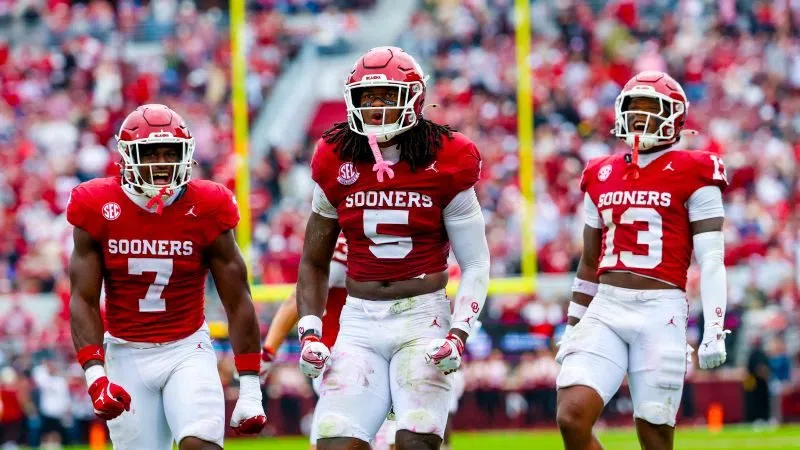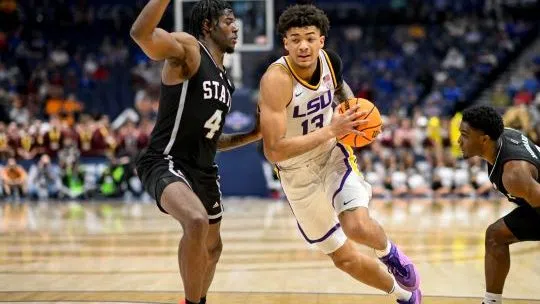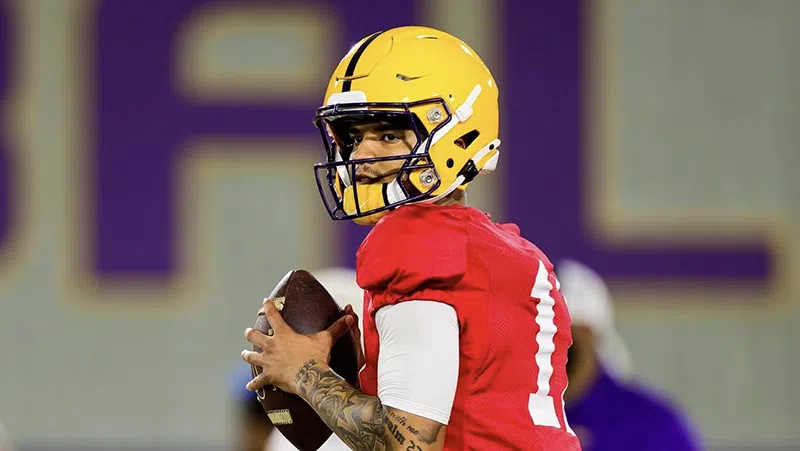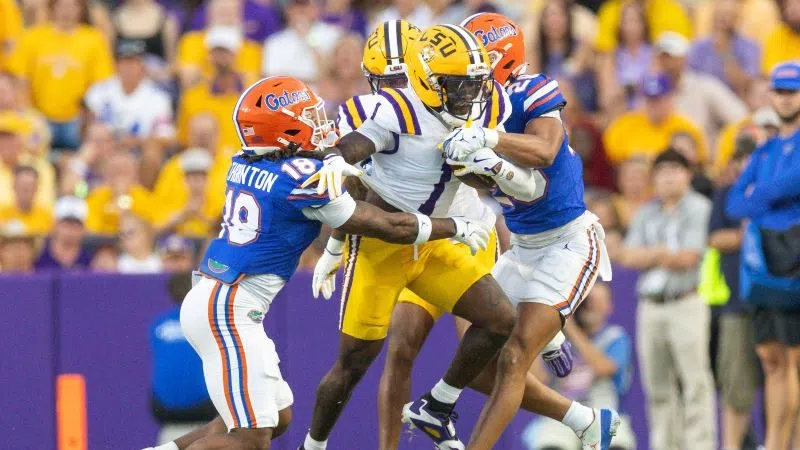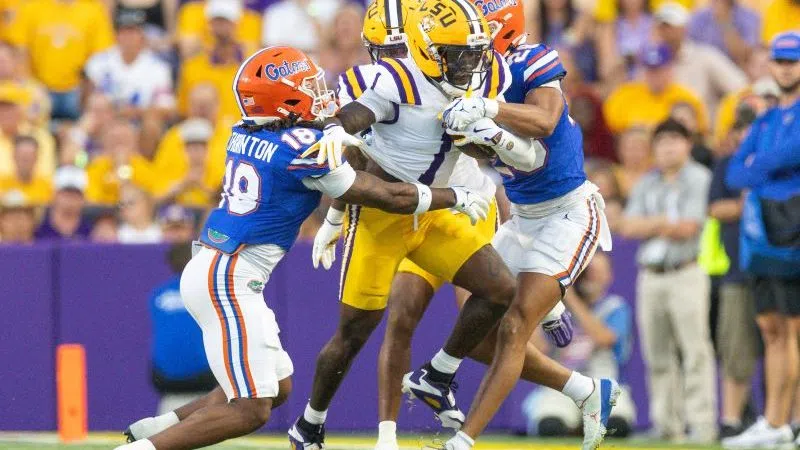
Stephen Lew-Imagn Images
By Hunt Palmer
LSU will search for offensive answers during the open date.
The offense produced enough to notch early-season wins over Clemson and Florida, but Saturday’s effort in Oxford wasn’t enough.
The running game is the deepest problem on the team. It’s been that way all of September. The Tigers rank last in the SEC in rushing attempts per game and 15th of 16 teams in rushing yards per game. Only South Carolina has been less productive.
It’s fair to suggest the offensive line has blocked poorly.
According to Pro Football focus, no LSU offensive lineman who has logged significant snaps has graded out 65 or better as a run blocker this season.
Run Blocking
Braelin Moore: 64.4
DJ Chester: 58.1
Tyree Adams: 56.8
Josh Thompson: 54.4
Coen Echols: 48.9
Paul Mubenga: 46.7
Weston Davis: 41.5
Whether or not you agree fully with Pro Football Focus’s grades, those numbers over a month of football suggest there are significant issues up front.
I took a look at LSU’s three games against the Power Four (Clemson, Florida, Ole Miss) and looked at the running plays to the tailbacks. I charted Caden Durham, Harlem Berry, Zavion Thomas and Ju’Juan Johnson’s 60 carries.
Of those plays, 35 of them (58%) have gone for less than four yards. Seventeen of them (28%) have gone for more than five yards. Only five of the 60 (8%) have gone for at least 10 yards. Thomas had two against Clemson. Durham had two at Clemson and one against Florida.
LSU’s only 10-yard run on Saturday came from Kaleb Jackson on a third and 20.
LSU doesn’t run the ball often, doesn’t block it well, doesn’t create chunk plays.
NOTHING DEEP
The deep ball has also been a huge problem for LSU.
Garrett Nussmeier is completing 81% of his throws that travel under 10 yards. Beyond 10 yards, that percentage dips to 50%. A regression is very natural on more difficult throws, so that’s not a major red flag. The amount of completions is concerning, though.
Last season, Nussmeier completed 31 passes that traveled at least 20 yards. That’s 2.3 per game. This season, he’s completed just seven in five games. That’s 1.4 per game. That might not sound like a lot, but it’s a pace of about 18 for the season as opposed to 31 last year.
That’s leaving 13 big plays out there with a wide receiver corps much more capable in the deep game with Chris Hilton healthy, Barion Brown in the lineup and Nic Anderson available.
Nussmeier is just 1-for-13 (8%) this season on 20-plus yard passes outside the numbers. In 2024, he was only 15-for-54 (28%), but four of the plays went for deep touchdowns. LSU desperately needs that explosiveness, and it’s just not there even with 40 percent of the September schedule coming against overmatched teams in Louisiana Tech and Southeastern Louisiana.
Brown beat Louisiana Tech deep on the first drive. Nussmeier underthrew it badly. Hilton torched Ole Miss deep on Saturday. Nussmeier underthrew it.
It’s impossible for us to know the extent of Nussmeier’s “torso” issue. Everyone at LSU insists that he’s just fine. The results have not been.
OVERALL THOUGHTS
None of this is breaking news. It’s obvious to anyone watching that LSU ground game is unproductive and the deep passing game is nonexistent. LSU has not gone back to the I-formation since Durham’s 51-yard run the close the Florida game. Some formational help for the offensive line may be a good idea.
Nussmeier has proven himself to be a good deep ball thrower over the last three years. Perhaps he’s hurt. Perhaps the earlier injury compromised his mechanics. Perhaps he’s just misfiring. Perhaps defenses are just slumping back in deep coverage because the ground game is so poor.
Of the struggles LSU has endured, the emergence of the deep passing game feels like the most likely remedy.
They have a week and a half to get it ironed out.

More LSU Sports
